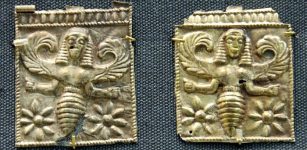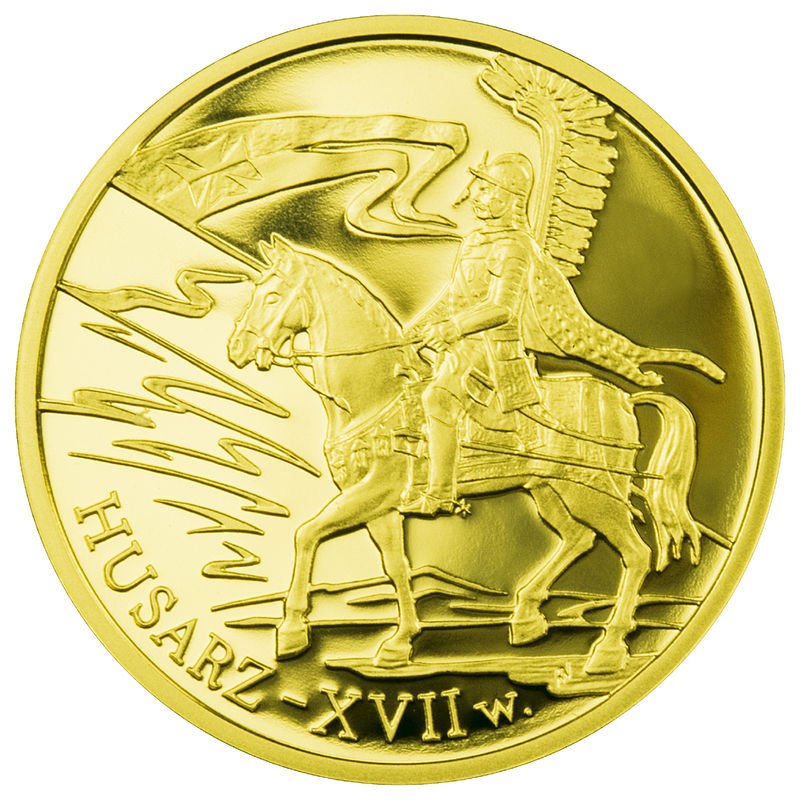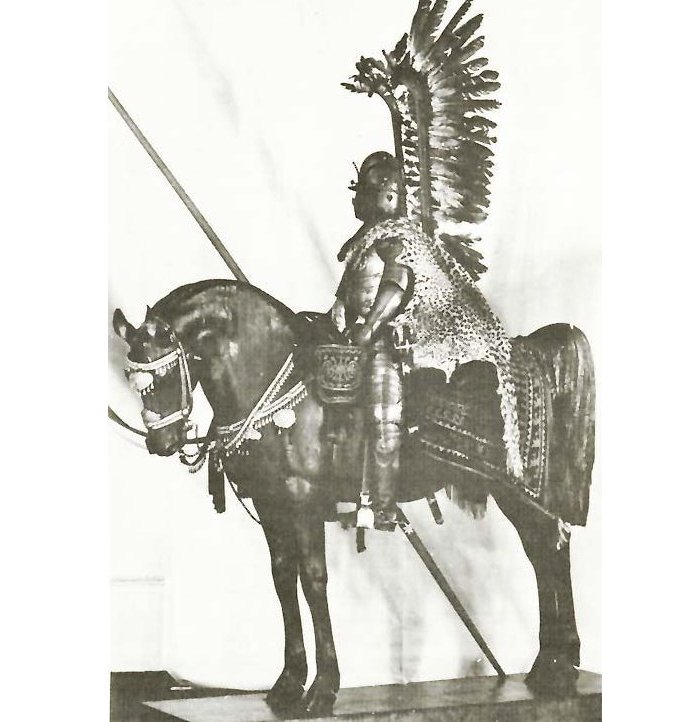Winged Hussars: Facts And History About The Polish Warriors, Their Armor And Military Tactics
Ellen Lloyd - AncientPages.com - The Winged Hussars were one of the most effective military forces in the world. They lost only a fraction of their battles and were undefeated for 125 years. They are remembered for their outstanding courage, great armor, and clever military tactics.
Winged Hussar by Józef Brandt
The Winged Hussars were known for the wings with long feathers worn on their backs or attached to the saddles of their horses, which during a charge, uttered a sound of vibrating feathers that frightened enemy infantry. Who were these courageous warriors, and what made them successful on the battlefield? In this article, we examine the history of the Winged Hussars.
Who Were The Winged Hussars?
The word "hussar" derives from the Hungarian Huszár. Exiled Serbian warriors introduced hussar horsemen – light cavalry armed with hollowed lance, Balkan-type shields, and saber.
The first recorded evidence of hussars can be found in Polish treasury books dated 1500. Initially, these troops were considered only light cavalry and were composed mainly of foreign mercenaries, called "Racowie" (in Polish), meaning "from the Serbian state of Ras."
By the second half of the 16th century and after Stephen Báthory's reforms, hussars had been transformed into heavily armored shock cavalry.
The "winged hussar" arrived with the reforms of the King of Poland and Grand Duke of Lithuania Stephen Bathory in the 1570s and was later led by the King of Poland and Grand Duke of Lithuania Jan III Sobieski.
To differ from Hungarian hussars, Polish-Lithuanian hussars came with their style, and their armor was entirely different. Until the reforms of the 1770s, the husaria banners were considered the elite of the Polish cavalry. It was not until the 1570s that the Polish Hussars finally came into full glory. It was the Golden era when the Polish-Lithuanian Commonwealth had become one of Europe's largest, most powerful, and most populated nations.
The Polish hussars are depicted on the commemorative 200 złotych gold coin. source
Each of the hussars was recruited from wealthier Polish and Lithuanian nobility, and together they were referred to as the "Szlachta."
Winged Hussars And Their Famous Battles
Winged Hussars were used as elite Polish-Lithuanian shock troops for over two centuries. The Winged Hussars fought battles against various enemies, most of which they won.
In the battles of Lubiszew in 1577, Byczyna (1588), Kokenhausen (1601), Kircholm (1605), Kluszyn (1610), Chocim (1621), Martynów (1624), Trzciana (1629), Ochmatów (1644), Beresteczko (1651), Polonka (1660), Cudnów (1660), Chocim (1673), Lwów (1675), Vienna (1683), and Párkány (1683), they proved to be the decisive factor against often overwhelming odds.
With the Battle of Lubiszew in 1577, the 'Golden Age of the husaria began.
The Battle of Lubiszew was one of the most important battles fought during the reign of the Polish-Lithuanian Commonwealth. It was waged against Danzig, whose citizens refused to accept the election of Stephen Batory as King of the Commonwealth and thus ensued the two-year Danzig Rebellion. The battle took place on April 17, 1577, to the west of the town of Tczew (Dirschau), southeast of Gdansk, on the left bank of the Vistula River. Despite their overwhelming numbers, the Danzig army was utterly defeated by the army of Jan Zborowskik.
One of the Polish Hussars' most significant victories occurred on June 23, 1601, in the Battle of Kokenhausen. Despite overwhelming numbers, Polish forces were able to defeat the Swedish army. In the aftermath of the battle, the Poles had lost 200 men, while the Swedes lost 2,000 men, including almost all of their infantry. The 2,000 Swedes who had besieged Koknese Castle, wanting no part in the battle, had surrendered to the Poles, their weapons confiscated by the Polish forces.
The Battle of Kircholm, one of the significant battles in the Polish-Swedish War, was fought on September 27, 1605.
The Winged Hussars launched a devastating charge against the enemy, ending the battle in the decisive victory of the Polish-Lithuanian forces.
Hussar armour and equipment of about 1640. (Polish Army Museum, Warsaw)
It is remembered and celebrated today as one of the greatest triumphs of the Polish Hussars. The battle was decided in all of 20 minutes.
In the Battle of Kluszyn 1610, during the Polish–Muscovite War, the Russians outnumbered the Commonwealth army 5 to 1, yet were heavily defeated.
The Armor And Military Tactics Of The Winged Hussars
Why the hussars had enormous wings on their backs remains a subject of speculation, but this armor was most likely used as part of psychological warfare to scare the enemy.
These wings were made from wooden frames and eagle, ostrich, or swan feathers. Some suggest that wings were worn to make the charge look larger and scare enemy horses. Some historians suggest that these wings offered some protection from sabres or Tatar lassos.
The Polish-Lithuanian hussars' primary battle tactic was the charge. They carried the charge to and through the enemy. It was a key to their victories. The hussars fought with a long lance, a szabla (sabre), 1 or 2 pistols, and often with a carbine or arquebus, known in Polish as a bandolet, and sometimes a war hammer or light ax. Their armor and horses' charging attack and heavyweight guaranteed victory for nearly two centuries.
The Hussar's Lance was constructed differently than medieval lances, as its center was bored out to save weight, and it was longer than its precursors - many were even 5.5m long- but were still lighter than western lances.
Heavy cavalry had fewer uses on the battlefield as guns and artillery improved. Winged Hussars were finally disbanded in 1776 when they were succeeded by much lighter Uhlans, light cavalry armed with lances, sabres, and pistols. To some, the winged hussars were great heroes. Other people consider them the most brutal cavalry force in the world for most of the 16th and 17th centuries.
The Winged Hussars were victorious, although they often had fewer men than their opponents.
In the Battle of Kluszyn, the Russians had 35,000 troops, and the Crown of Poland only had 6,800. However, Poland came out of the battle as the victor.
Written by Ellen Lloyd – AncientPages.com
Updated on February 16, 2023
Copyright © AncientPages.com All rights reserved. This material may not be published, broadcast, rewritten or redistributed in whole or part without the express written permission of AncientPages.com
Expand for referencesMore From Ancient Pages
-
 Baby Carriers Were Used 10,000 Years Ago – New Evidence
Archaeology | Sep 27, 2022
Baby Carriers Were Used 10,000 Years Ago – New Evidence
Archaeology | Sep 27, 2022 -
 Ancient Human Traces Found In The Inhospitable Namib Desert
Human Beginnings | Oct 21, 2024
Ancient Human Traces Found In The Inhospitable Namib Desert
Human Beginnings | Oct 21, 2024 -
 Magnificent Ancient Rock-Cut Lycian Tombs Of Myra, Antalya, Turkey
Civilizations | Aug 9, 2015
Magnificent Ancient Rock-Cut Lycian Tombs Of Myra, Antalya, Turkey
Civilizations | Aug 9, 2015 -
 The Hitra Man Lived In A Turbulent Time – Was He A Stone Age Warrior?
Archaeology | May 10, 2024
The Hitra Man Lived In A Turbulent Time – Was He A Stone Age Warrior?
Archaeology | May 10, 2024 -
 Lost Ancient Texts Of The Star Catalogue Composed By The Greek Astronomer Hipparchus Found
News | Feb 21, 2023
Lost Ancient Texts Of The Star Catalogue Composed By The Greek Astronomer Hipparchus Found
News | Feb 21, 2023 -
 How Strong Is The Link Between Sanskrit And European Languages?
Linguistic Discoveries | Aug 5, 2020
How Strong Is The Link Between Sanskrit And European Languages?
Linguistic Discoveries | Aug 5, 2020 -
 Secrets Of The Lost Ancient Sahara Civilization
Civilizations | Oct 26, 2018
Secrets Of The Lost Ancient Sahara Civilization
Civilizations | Oct 26, 2018 -
 Vikings’ Unicorn Bluff Fooled Europeans For Hundreds Of Years
Ancient History Facts | Apr 24, 2018
Vikings’ Unicorn Bluff Fooled Europeans For Hundreds Of Years
Ancient History Facts | Apr 24, 2018 -
 Vindelev Treasure Re-Writes Ancient History – World’s Oldest Runic Inscription Of God Odin Found On Ancient Gold Pendants
Archaeology | Mar 8, 2023
Vindelev Treasure Re-Writes Ancient History – World’s Oldest Runic Inscription Of God Odin Found On Ancient Gold Pendants
Archaeology | Mar 8, 2023 -
 Bees – Embodiment Of Human Soul, Divine Messengers Symbolizing Invisible Bridge Connecting Life And Death
Featured Stories | Jul 26, 2023
Bees – Embodiment Of Human Soul, Divine Messengers Symbolizing Invisible Bridge Connecting Life And Death
Featured Stories | Jul 26, 2023 -
 Unusual Stone Carvings And Medieval ‘Witching’ Marks To Ward Off Evil Spirits Discovered In England
Archaeology | Oct 29, 2020
Unusual Stone Carvings And Medieval ‘Witching’ Marks To Ward Off Evil Spirits Discovered In England
Archaeology | Oct 29, 2020 -
 European Mythical Creatures Encountered In The Witcher Series
Featured Stories | Feb 4, 2020
European Mythical Creatures Encountered In The Witcher Series
Featured Stories | Feb 4, 2020 -
 Spectacular Find: Lost Temple Of Goddess Artemis Has Been Found On Greek Island Of Euboea
Archaeology | Sep 22, 2017
Spectacular Find: Lost Temple Of Goddess Artemis Has Been Found On Greek Island Of Euboea
Archaeology | Sep 22, 2017 -
 Discovery Of Half-Million-Year-Old Wooden Structure Shows We’re Wrong To Underestimate Our Ancient Relatives
Featured Stories | Oct 10, 2023
Discovery Of Half-Million-Year-Old Wooden Structure Shows We’re Wrong To Underestimate Our Ancient Relatives
Featured Stories | Oct 10, 2023 -
 Dangerous Anomaly Inside Mysterious European Mountain Remains Unexplained – Unusual Ancient Connections – Part 1
Featured Stories | Mar 13, 2021
Dangerous Anomaly Inside Mysterious European Mountain Remains Unexplained – Unusual Ancient Connections – Part 1
Featured Stories | Mar 13, 2021 -
 Roman-era mass grave with 60 bodies found in farmer’s field
Civilizations | Aug 27, 2015
Roman-era mass grave with 60 bodies found in farmer’s field
Civilizations | Aug 27, 2015 -
 A Unique Native American Map Everyone Should See
Featured Stories | May 21, 2021
A Unique Native American Map Everyone Should See
Featured Stories | May 21, 2021 -
 Strange Ancient Sky Phenomenon – It Was Not A ‘Natural’ Space Object – Scientist Said
Featured Stories | Nov 5, 2019
Strange Ancient Sky Phenomenon – It Was Not A ‘Natural’ Space Object – Scientist Said
Featured Stories | Nov 5, 2019 -
 500-Year-Old Vaishnava Saint Sculptures Discovered
Archaeology | Oct 15, 2015
500-Year-Old Vaishnava Saint Sculptures Discovered
Archaeology | Oct 15, 2015 -
 Ancient Societies Ruled By Ruthless Dictators – Collapsed
Civilizations | Oct 18, 2020
Ancient Societies Ruled By Ruthless Dictators – Collapsed
Civilizations | Oct 18, 2020



